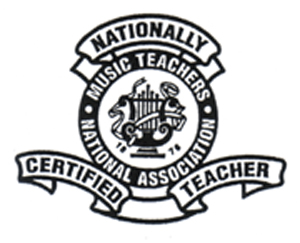|
In my last post, I went over the benefits of regular scale practice (and the resulting mastery of all 24 scales). Here are some ways to practice scales (and make them just a bit more fun):
Direction: 1. THE BASIC: 1-2 octaves (young beginners) or 4 octaves (intermediate and advanced) in parallel motion. Hands move in the same direction at all times. 2. CONTRARY MOTION: Both hands start on the same key (e.g. for C major, both hands on middle C) and move in opposite directions. The notes will not be the same but (for most scales) the fingering will be the same. Two octaves each direction. 3. RUSSIAN SPLITS (late intermediate): Two octaves parallel ascending (start low), two octaves contrary and back, two more octaves parallel ascending, two octaves parallel descending, two octaves contrary and back, and two more octaves descending (to get to starting position). 4. TRIPLETS (advanced): LH plays a one-octave scale low in the keyboard. RH starts an octave above and plays triplets (3 notes per LH note) for four octaves. Continue this pattern until the hands return to the starting position (it will take ___ complete RH scales to get to this point). Then switch: RH plays a descending one octave scale at the top of the piano, LH plays a descending four octave scale in triplets. Articulation and Dynamics: 5. All legato. 6. All staccato. 7. Legato on the way up, staccato on the way down (and reverse) 8. One hand legato, the other hand staccato. Try for the entire scale, or switch halfway. Or switch every octave! 9. All forte. 10. All piano. 11. Forte on the way up, piano on the way down (and reverse) 12. Crescendo on the way up, diminuendo on the way down (and reverse). 13. Crescendo to the halfway point of the ascent, then diminuendo to the top. Same on the way down (and then reverse). 14. One hand forte, the other hand piano. Try for the entire scale, or switch halfway. Or switch every octave! Variations: 15. THIRDS: LH starts on the tonic, RH starts a 3rd above (median) 16. SIXTHS: LH starts on the 3rd note of the scale (median), RH starts a 6th above (tonic) 17. TENTHS: Like thirds, but with an octave in between 18. OCTAVES. Both hands playing octaves. Some helpful links: http://www.true-piano-lessons.com/piano-scales.html http://www.pianocareer.com/piano-technique/piano-scales-arpeggios-art-exercise/ http://kantsmusictuition.blogspot.com/2007/09/method-of-practising-scales.html
1 Comment
Not many students would call practicing scales fun (at least, until they become fluent in them). When I ask students why we practice scales, broken chords, cadences, etc. I usually get a blank stare, unhappy face, and a response that goes something like this: "Because... we have to?"
Scales are an essential skill for every musician. They develop:
|
AboutElizabeth Borowsky is a pianist, teacher, and composer. She is a Nationally Certified Teacher of Music in Piano (Music Teachers National Association). SubscribeCategories
All
Archives
May 2023
|
Location |
|



 RSS Feed
RSS Feed